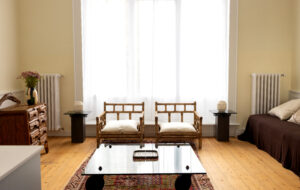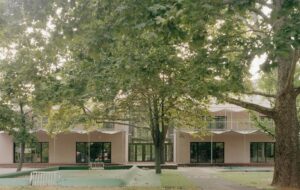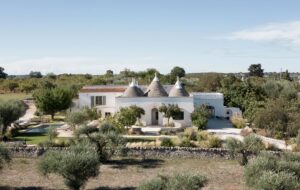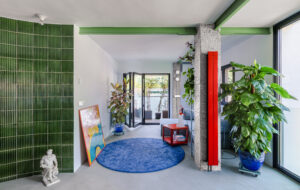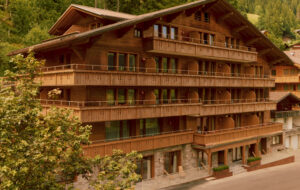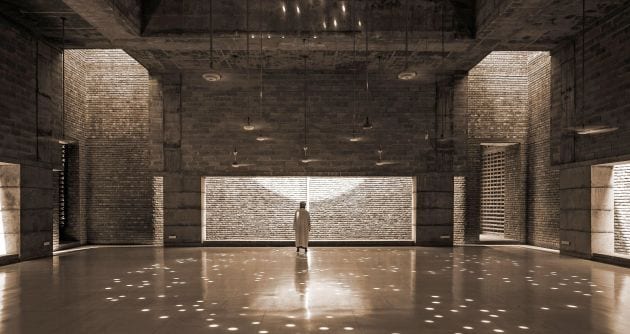 Bait-ur-Rouf Mosque in Dhaka. Photo by Sandro di Carlo Darsa courtesy of MTA
Bait-ur-Rouf Mosque in Dhaka. Photo by Sandro di Carlo Darsa courtesy of MTA
Bangladeshi architect Marina Tabassum aims to create architecture that is sensitive to the history and traditions of its place
Bangladeshi architect Marina Tabassum is the principal of Marina Tabassum Architects (MTA) and is best known for the Bait-ur-Rouf Mosque in Dhaka, which won her an Aga Khan award in 2016.
Tabassum aims to establish a contemporary architectural language that doesn’t lose its connection to the history and traditions of Bangladesh. Therefore MTA focuses on using local materials where possible, and paying attention to the local climate, culture and history.
Born in Dhaka, Tabassum studied architecture at the Bangladesh University of Engineering and Technology, graduating in 1994. In 1995 Tabassum founded URBANA, an architecture practice based in Dhaka, Bangladesh, with Kashef Chowdhury. The studio ran for a decade until 2005 when Tabassum founded her own practice, MTA.
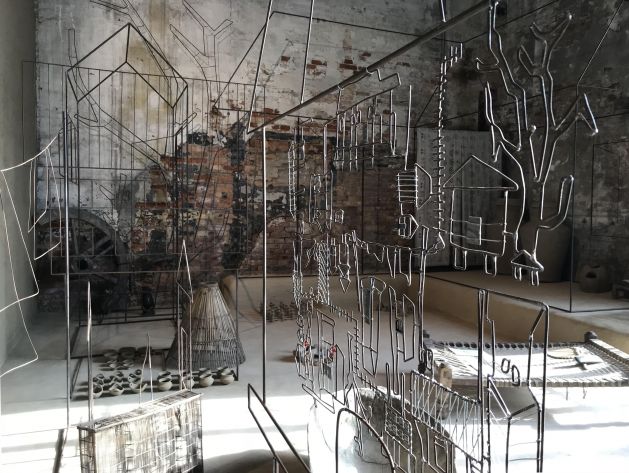 Wisdom of the Land. Photo courtesy of MTA
Wisdom of the Land. Photo courtesy of MTA
The well-known Bait-ur-Rouf Mosque in Dhaka, Bangladesh was completed in 2012 and was shortlisted for the Aga Khan Award in 2016. Tabassum had previously been shortlisted for the Aga Khan Award in 2004 for A5, for a pavilion apartment she designed.
Read more: Marina Tabassum’s architecture of resistance
The Bait-ur-Rouf Mosque functions as a school, meeting place, ad as a playground for an underserved neighbourhood on the periphery of Dhaka. The building includes a colonnade built with perforated terracotta brickwork that allows the light and air to filter into the mosque. Inside and outside the brickwork has been left bare in reference the local architecture and is raised on a plinth to protect it from flood water.
The mosque was built over the course of 12 years, with a very small budget and charitable donations. It lacks the common mosque iconography, instead placing an emphasis on creation of space and use of light, as well as its ability to function as playground and community space.
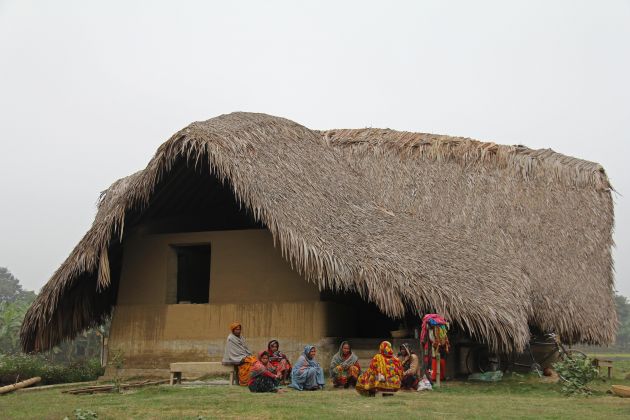
In 2018, Tabassum created Wisdom of the Land, an installation for the 2018 Venice Architecture Biennale, based on the vernacular architecture of Bengali courtyards and their ability to create a sense of community. She also created three prefab houses at the Sharjah Architecture Triennial to highlight the relocation of families caused by the changing river channels in the Bengal Delta. The houses are easy to assemble and disassemble, making them an ideal solution for homes on land that is at high risk of flooding. Projects such as these demonstrate how the MTA architecture practice are so adept at embracing informality.
Read more: Sharjah Architecture Triennial embraces the desert
One of Tabassum’s most recent projects is the socially and environmentally responsible Panigram Resort in the Ganges Delta. The resort is built in line with the local vernacular architecture: thatched bamboo huts on mud floors that are positioned around traditional Bengali courtyards. The aim was to ensure that the resort is well integrated with its neighbouring villages.
As well as the Aga Khan Award, Tabassum was also the first architect to win the Jameel Prize, which is a partnership between Dubai-based Art Jameel and the Victoria & Albert Museum in London, for contemporary artists and designers employing Islamic traditions.





